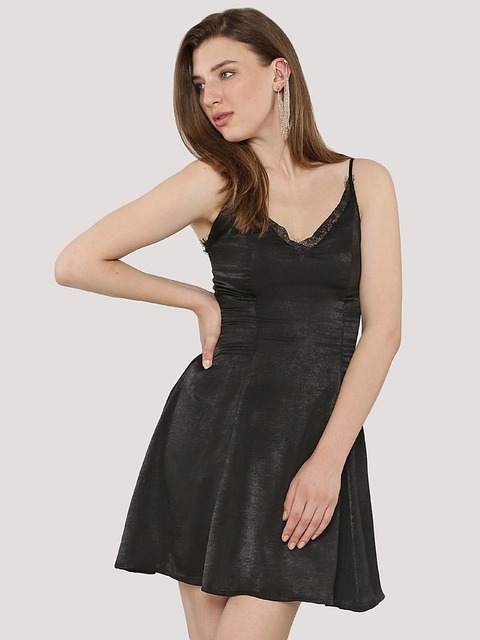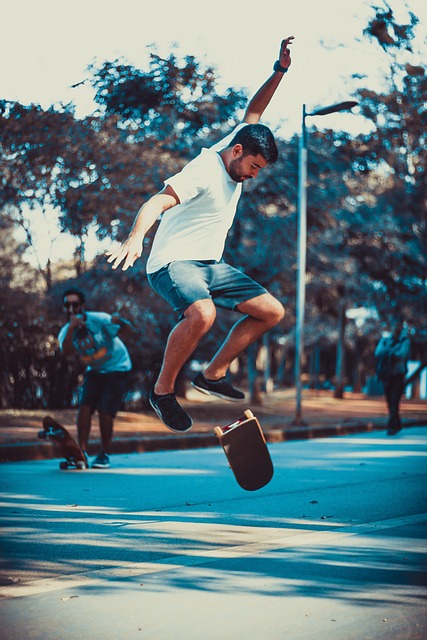When choosing a longboard for beginners, it's crucial to consider factors such as wheelbase length, deck flex, and truck type to ensure stability, comfort, and responsiveness. A longer wheelbase offers greater stability, ideal for cruising and high-speed riding, while shorter wheelbases are more agile for technical maneuvers. Reverse kingpin trucks are generally better for beginners due to their tighter turn radius and responsive steering. The deck material should be durable and offer a balance between versatility and ease of learning. Additional accessories like grip tape, deck bags, safety lights, and reflective tape can enhance both the safety and performance of your longboard. Customizable trucks with adjustable bushings allow for fine-tuning to suit individual preferences and riding conditions. Whether you're cruising through city streets or carving on country roads, a well-chosen longboard tailored for beginners will provide a safe, enjoyable, and adaptable experience as your skills progress.
Embarking on the journey of longboarding can be both exhilarating and daunting for beginners. With a myriad of deck options and technical details, it’s crucial to navigate the path that best suits your riding style and preferences. This article serves as a comprehensive guide to understanding the flexibilities inherent in Longboards, tailored specifically for novice riders. From grasping the anatomy that affects deck flexibility to selecting the top longboard decks designed for beginners, we’ll explore the benefits and considerations that will enhance your control and stability on the road. Additionally, we’ll delve into the impact of wheelbases, the importance of truck types, and the necessity of grip tape for optimal foot placement. Finally, we’ll provide essential tips on accessorizing your longboard to ensure a complete and safe setup. Whether you’re carving through urban landscapes or cruising along scenic trails, this guide will equip you with the knowledge to choose the right longboard for beginners.
Understanding Longboards: A Beginner's Guide to Flexible Deck Choices

Longboards are an excellent choice for those new to the world of longboarding, offering a stable and more comfortable platform compared to traditional skateboards. A longboard for beginners typically features a larger deck, which provides a spacious area for foot placement and enhances stability during rides. The length and width of these decks are designed to accommodate various styles of longboarding, such as carving, cruising, or downhill racing, catering to the diverse preferences of newcomers.
When selecting a flexible deck for beginners, consider the deck’s flex characteristic, which is crucial for both comfort and control. A moderate flex in the deck can absorb shocks from the road and provide a responsive ride, making it more forgiving over bumps and cracks. Additionally, the choice of material, such as maple or bamboo, affects the deck’s flexibility, durability, and overall feel underfoot. For those starting their longboarding journey, opting for a deck with a good balance between stiffness and flexibility is often advisable. This not only ensures safety but also allows for a gradual learning curve as skills develop. Beginners should also pay attention to the wheel size and truck setup, as these components work in tandem with the deck to influence the board’s performance on different terrains. With a longboard for beginners that suits your individual needs and preferences, you’ll be well-equipped to enjoy a smooth learning experience and progress towards more advanced longboarding techniques.
The Anatomy of a Longboard for Beginners: What Makes a Deck Flexible?

When embarking on the journey of mastering a longboard, especially as a beginner, understanding the anatomy and characteristics of a flexible deck is crucial for safety and enjoyment. A flexible longboard deck, as opposed to a rigid one, offers a more forgiving ride that can enhance control and comfort. The flexibility of a deck is primarily determined by its materials and construction. Typically, decks made from bamboo, fiberglass, or a combination of both can provide the desired level of flex. Bamboo, known for its strength-to-weight ratio, adds springiness to the board, while fiberglass reinforces it for added durability without compromising the pliability.
The length and width of the deck also play significant roles in how flexible it feels. A longer deck can offer more stability for beginners, reducing the chances of wobbling at slower speeds, which is often a concern when starting out. In contrast, a wider deck allows for more foot space, which can be particularly beneficial when learning to balance and perform turns. The concave profile of the deck, or its camber, further contributes to its flex. A moderate concave can help in directing the rider’s feet towards the center of the board, enhancing stability during turns and on uneven surfaces. For beginners, a longboard with a mild to medium flex, along with an appropriate wheel size and durometer, will provide a balanced and adaptable ride that suits various terrains and learning curves.
Deck Flexibility: Benefits and Considerations for Novice Riders

When venturing into the realm of deck sports, particularly longboarding, novice riders will quickly discover the importance of deck flexibility. A flexible deck, often constructed with a combination of materials that offer resilience and shock absorption, like bamboo or fiberglass, can significantly enhance the riding experience for beginners. This adaptability ensures a smoother ride over uneven terrain, reducing the risk of falls and injuries as riders become accustomed to their longboard for beginners. The give of a flexible deck also provides better control, allowing newcomers to maneuver with more precision and confidence.
Moreover, a beginner-friendly longboard with a flexible deck is typically lighter in weight, making it easier to handle and transport. It also tends to offer a more comfortable ride due to its ability to contour to the rider’s feet, providing a natural, intuitive feel that can accelerate learning and skill development. When selecting a longboard for beginners, considering a model with a deck that offers a balance of flexibility and rigidity is crucial. This balance allows for both responsive handling and the stability needed for new riders to safely explore the boundaries of their sport.
Top Longboard Decks for Beginners: Versatility and Stability in One

For those embarking on their longboarding journey, selecting a deck that offers both versatility and stability is paramount. A longboard for beginners should provide a smooth ride with enough length to carve confidently while ensuring the rider feels secure. The top longboard decks for beginners are designed with a focus on balance, making them suitable for various riding styles from cruising to downhill racing. These decks typically feature a slightly longer wheelbase compared to their shorter board counterparts, which helps in providing a more stable platform and absorbing road vibrations. This design aspect is crucial for novices who are still developing their foot placement and turning techniques.
The deck’s flex profile is another important factor; it should not be too rigid or too soft, as both extremes can affect the riding experience negatively. A moderate flex allows for a comfortable ride that can adapt to different terrains and riding conditions. Additionally, the decks often come with a concave shape that supports the rider’s feet, promoting better control during turns and maneuvers. This is an essential feature for beginners who are learning to grip the board effectively. When selecting from among the best longboard decks for beginners, consider options that boast a sturdy construction with durable materials, ensuring longevity and safety as you progress in your longboarding skills.
Comparing Wheelbases: Longboard Dimensions and Their Impact on Ride Quality

When selecting a longboard for beginners, understanding the implications of wheelbase length is crucial for optimizing ride quality and performance. A longer wheelbase typically offers increased stability at higher speeds due to its larger turning radius. This can be particularly beneficial for novice riders who are still developing their balance and confidence on a longboard. Shortboards, with their shorter wheelbases, are more maneuverable, making them ideal for tight spaces and quick turns. However, they may feel less stable for those new to the sport. The wheelbase directly affects how the board responds to rider input, with longer boards offering smoother, more predictable rides over varied terrain, whereas shorter wheelbases provide a snappier, more responsive ride that’s better suited for technical riding and aggressive turning.
In addition to stability and maneuverability, the wheelbase length influences how a longboard for beginners interacts with vibrations and bumps. A longer wheelbase can absorb more road irregularities, leading to a smoother experience, especially when cruising at higher speeds. Conversely, shorter wheelbases might transfer more feedback from the road directly to the rider, which can be advantageous for experienced riders looking for a hyper-responsive feel but may be overwhelming for beginners. When choosing a longboard, beginners should consider their intended use—whether they prefer a comfortable, stable ride or a nimble, responsive deck—and select a wheelbase that aligns with those preferences. Properly understanding the relationship between wheelbase length and ride quality can significantly enhance the learning curve for new longboarders and contribute to a more enjoyable and safer riding experience.
Truck Types and Their Role in Enhancing the Flexibility of Your Longboard

When exploring a longboard for beginners, it’s crucial to consider the diverse truck types available, as they play a pivotal role in the deck’s flexibility and maneuverability. Trucks are the T-shaped metal components that connect your longboard to its wheels, and they come in various configurations that cater to different styles of riding. For instance, reverse kingpin (RKP) trucks offer a tighter turn radius, making them an excellent choice for beginners who want to navigate through tight spaces or carve on mellower slopes. RKP trucks are known for their responsive steering and are typically paired with a softer bushings setup, which allows for smoother turns and easier control, ideal for novices learning the ropes of longboarding.
On the other hand, traditional kingpin (TKP) trucks provide a more stable ride, which can be beneficial for downhill riding or cruising at higher speeds. They offer a looser turn than RKP trucks, allowing for a smoother ride over bumps and uneven surfaces. This flexibility in handling can be particularly advantageous for beginners who are still developing their balance and confidence on a longboard. Additionally, the choice between top-mounted, drop-through, or carve-top-mount (CTM) trucks will further influence the deck’s flex and the overall ride experience. Top-mounted trucks offer a more responsive feel, while drop-through trucks provide a lower center of gravity for stability and easier pushing. CTM trucks combine elements of both, offering a balance between agility and ease of ride. By carefully selecting the right combination of truck type and mounting style, beginners can significantly enhance their longboard’s flexibility, making their learning journey more enjoyable and accessible.
Grip Tape and Foot Placement: Essential Tips for Maximizing Deck Control

When mastering a longboard, especially as a beginner, understanding and utilizing grip tape effectively is paramount for enhancing control over your deck. Grip tape serves as a sandpaper-like layer on top of the board’s surface, providing traction to keep your feet in place during turns and rides. To maximize deck control, start by positioning your feet correctly; place one foot slightly ahead of the other, with the back foot closer to the rear trucks and the front foot nearer the nose. This stance allows for better balance and easier steering. For beginners, it’s crucial to distribute weight evenly across both feet, ensuring stability on the board. Experiment with different foot placements to find what feels most natural and secure while riding. Additionally, practice shifting your weight from heel to toe to navigate through turns and maneuver around obstacles. This movement will activate the grip tape’s traction, preventing slips and falls.
Adjusting your grip tape is also a key factor in optimizing control. Ensure that the surface isn’t too worn out or too thick; both conditions can compromise your connection with the board. A fresh, even sheet of grip tape will give you the best feedback from your longboard, allowing for precise control over every movement. Regularly check and sand the grip tape to maintain its effectiveness. By paying close attention to your foot placement and maintaining your grip tape, beginners can significantly improve their deck control, leading to a more confident and enjoyable longboarding experience. Remember, as you become more adept, subtle shifts in your foot positioning and weight distribution will become second nature, enhancing your ability to navigate the longboard with ease and precision.
Accessorizing Your Longboard: Completing Your Setup with Bags, Lights, and More

When customizing your longboard for beginners, ensuring that it’s both functional and personal to your style is key. Accessorizing your longboard not only enhances its aesthetic appeal but also its practicality for daily use. A sturdy deck bag designed for Longboards is an essential addition, as it securely carries your board when you’re off it, protecting it from the elements and potential theft. This bag can be attached to your backpack or worn independently, offering versatility for different situations. Additionally, lighting is a crucial element for safety, especially if you’re planning to ride during dusk or nighttime hours. LED wheel lights are a popular choice, providing not just visibility but also an eye-catching effect that can be both subtle and vibrant depending on your preference. These lights are simple to install and require no special tools or skills, making them accessible for beginners. For those who commute, reflective tape is another must-have, enhancing your visibility to motorists and pedestrians alike.
Furthermore, complementing your longboard with additional accessories can elevate both your ride and experience. Grip tape is a beginner-friendly enhancement that offers traction, helping you maintain stability while performing turns and tricks. Longboard trucks can be fine-tuned with bushings to suit your weight and riding style, ensuring a smoother or more responsive ride as needed. Bear in mind that the choice of wheels also plays a significant role; softer wheels are ideal for cruising, while harder wheels perform better on rougher surfaces. Lastly, consider adding grip tape for enhanced traction during turns and tricks, which is particularly beneficial for beginners learning to navigate their longboard with confidence. With these accessories, your longboard for beginners becomes a versatile tool that can adapt to various environments and riding preferences, making every journey safer and more enjoyable.
